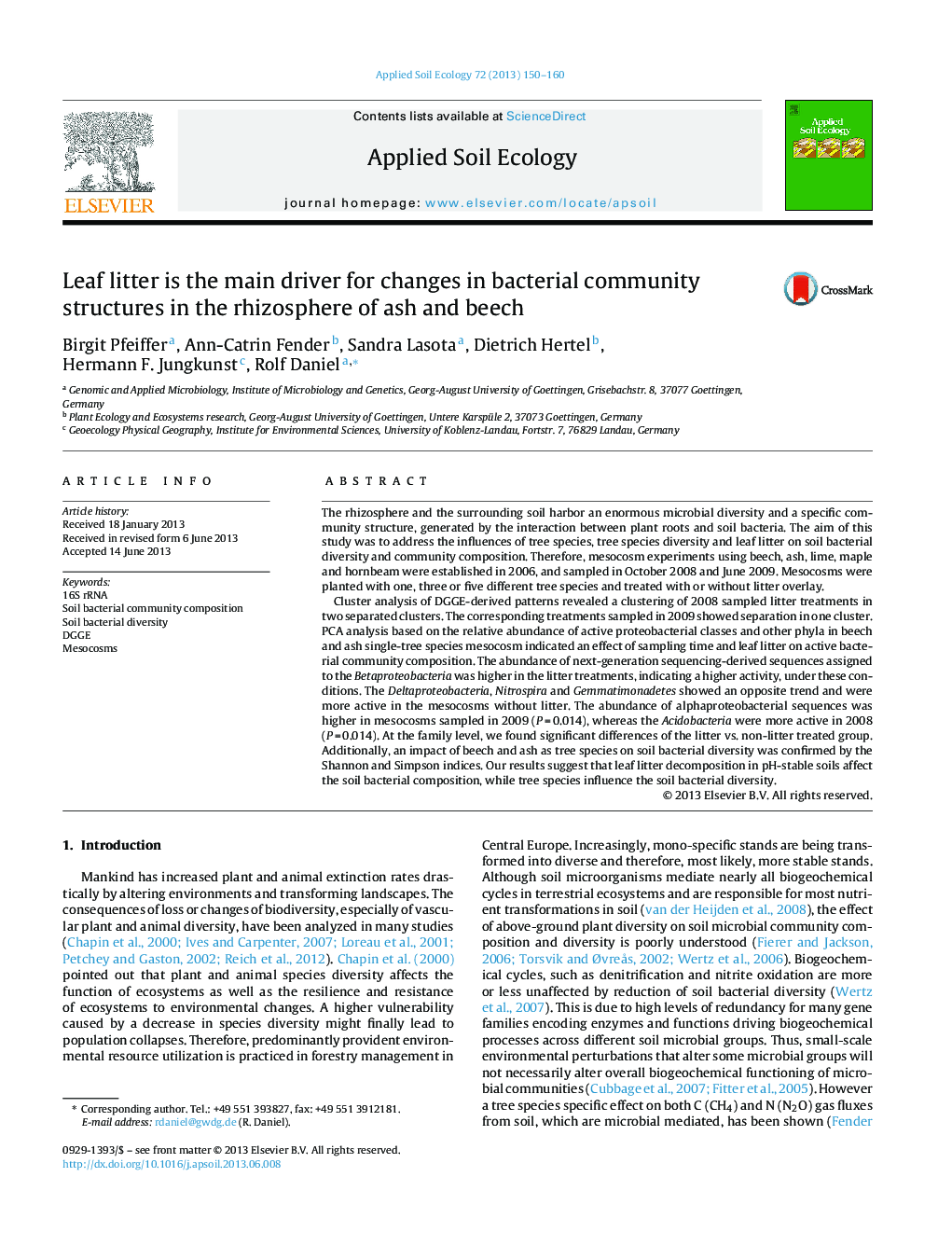| Article ID | Journal | Published Year | Pages | File Type |
|---|---|---|---|---|
| 4382333 | Applied Soil Ecology | 2013 | 11 Pages |
Abstract
Cluster analysis of DGGE-derived patterns revealed a clustering of 2008 sampled litter treatments in two separated clusters. The corresponding treatments sampled in 2009 showed separation in one cluster. PCA analysis based on the relative abundance of active proteobacterial classes and other phyla in beech and ash single-tree species mesocosm indicated an effect of sampling time and leaf litter on active bacterial community composition. The abundance of next-generation sequencing-derived sequences assigned to the Betaproteobacteria was higher in the litter treatments, indicating a higher activity, under these conditions. The Deltaproteobacteria, Nitrospira and Gemmatimonadetes showed an opposite trend and were more active in the mesocosms without litter. The abundance of alphaproteobacterial sequences was higher in mesocosms sampled in 2009 (PÂ =Â 0.014), whereas the Acidobacteria were more active in 2008 (PÂ =Â 0.014). At the family level, we found significant differences of the litter vs. non-litter treated group. Additionally, an impact of beech and ash as tree species on soil bacterial diversity was confirmed by the Shannon and Simpson indices. Our results suggest that leaf litter decomposition in pH-stable soils affect the soil bacterial composition, while tree species influence the soil bacterial diversity.
Related Topics
Life Sciences
Agricultural and Biological Sciences
Ecology, Evolution, Behavior and Systematics
Authors
Birgit Pfeiffer, Ann-Catrin Fender, Sandra Lasota, Dietrich Hertel, Hermann F. Jungkunst, Rolf Daniel,
